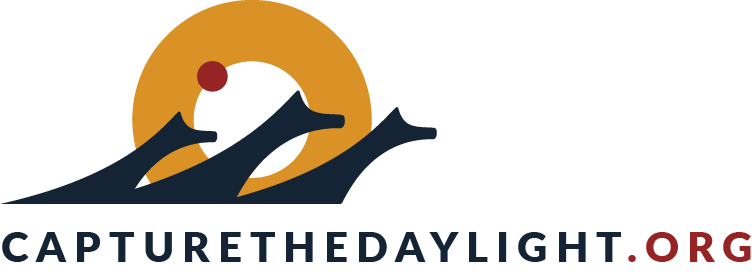
Everyone deserves to be treated with kindness and respect.
capture the daylight
If you or someone you are with is in immediate crisis, dial 911
Why this matters to us
Bullying is unwanted and aggressive behavior that can be verbal, physical, or social. It’s about real or perceived power, and it is not aligned with our values. People are often bullied because they’re perceived to be different than their peers; however, we know that in our differences lie our strength as a community, and we honor them
Anyone can be bullied, no matter their age. Children who are bullied can become withdrawn, sad, frustrated or aggressive. They may avoid school or social events, and school performance can suffer. They may also show signs of physical stress, like headaches or stomachaches. Adults who are bullied have similar reactions, especially if they lack a peer support system.
It’s up to all of us to make it clear that bullying has no place in our community. We can lead by example, treating everyone around us with the kindness and respect they deserve regardless of disagreements or differences.
Bullying behavior is often situational – someone who bullies people at school might be experiencing it themselves at home. This cycle is why bullying needs to be reported, for the good of all parties involved. Another tip is to not label specific kids as “bullies” or “victims” for several reasons:
- Doing so can send the message that the child’s behavior cannot change
- Fail to recognize the multiple roles children might play in different bullying situations
- Disregard other factors contributing to the behavior such as peer influence or school climate
Bullying often reflects underlying issues, and it’s important to recognize that individuals who bully may be experiencing challenges themselves. This is why it’s essential to report bullying—not just to protect those being targeted but to break the cycle of harm. It’s also important to avoid labeling children as “bullies” or “victims” for a few reasons. These labels can suggest that a child’s behavior is unchangeable. They also fail to recognize that children might play different roles in different situations, and they overlook other contributing factors such as peer pressure or the overall school environment.
If you or your child is being bullied in school, it’s a good idea to speak with a trusted teacher, school counselor, or principal about your concerns. You can also submit an anonymous report using the Safe Schools Alert system here.
In the workplace, Tulalip has a strict zero-tolerance policy for bullying. You can refer to the Tulalip Tribal Government Employee Handbook for more details, which you can find here.
If your child is being bullied online, encourage them to ask for help and stay calm. It’s important not to react impulsively or retaliate. Instead, work with your child to block the harasser’s accounts and carefully consider any responses. Involve your child in the process to ensure they feel supported and empowered. For additional resources on handling cyberbullying, you can refer to this guide.
Addressing bullying requires everyone’s involvement, whether in school, at work, or online. Taking steps to stand up against bullying is essential for fostering a supportive and safe environment for all.
What Are the Signs That Someone is Being Bullied?
Changes in behavior, withdrawal, and reluctance to go to school or work can be indicators. Open communication and supportive environments help address bullying.
How Does Tulalip Address Bullying?
Tulalip takes bullying seriously and offers programs and resources to support anyone experiencing or witnessing bullying, whether in schools, workplaces, or the community.
Quick Facts & More Information
- Bullying often involves an imbalance of power, repeated harmful actions, and an intent to harm.
- Approximately 20% of students aged 12–18 experience bullying nationwide.
- Bullying can be physical, verbal, social, or occur online (cyberbullying).
- Native youth may face unique bullying challenges due to cultural misunderstandings or stereotypes, making culturally informed interventions especially critical.
Where Can I Learn More About Bullying Prevention?
StopBullying.gov offers extensive resources on recognizing, preventing, and addressing bullying in different environments.
Additional Resources
Tulalip Resources
- Workplace Bullying: The Tulalip Tribes have established policies addressing workplace bullying. These guidelines offer clear definitions and processes to report and address workplace bullying. Learn more here.
Federal Resources
- StopBullying.gov: This federal resource provides comprehensive information about bullying, including prevention tips, ways to intervene, and how to support those affected. Learn more at: https://www.stopbullying.gov
Articles
- “How Bullying Harms the Brain” – Psychology Today
This article explores how bullying can impact mental health into adulthood, offering insights into why early intervention is crucial.
URL:https://www.psychologytoday.com/us/blog/the-bullied-brain/202306/how-bullying-harms-the-brain - “Cyberbullying: How to Protect Your Kids” – NPR
Learn about the Kids Online Safety Act (KOSA) https://www.npr.org/2024/08/02/nx-s1-5057818/kids-online-safety-act-cyberbullying-children-internet-social-media - “Bystanders to Bullying” – StopBullying.gov
This video explains the critical role that bystanders play in reducing bullying and supporting victims.
URL: https://www.youtube.com/watch?v=StPGbbBBrI0
Other Resources
@NativeHope (Instagram, Twitter): Native Hope frequently shares stories and resources to empower Native youth and address bullying in schools and communities.
URL: https://www.nativehope.org
Not In Our School: This movement encourages students and teachers to take a stand against bullying. Their website offers toolkits for starting anti-bullying campaigns.
URL: https://www.niot.org/nios
Now there is no one who could catch up with us.
There is something you can do.
Strong community connections are key to addressing this crisis. When neighbors and local groups unite, they create a support network that can identify and help those at risk. Small acts—checking in, sharing resources, offering support—make a real difference. These connections don’t just help in emergencies; they build resilience and prevent addiction from taking root.
Capture the Daylight officially launches in Spring 2025. Sign up here for updates leading to our launch!

